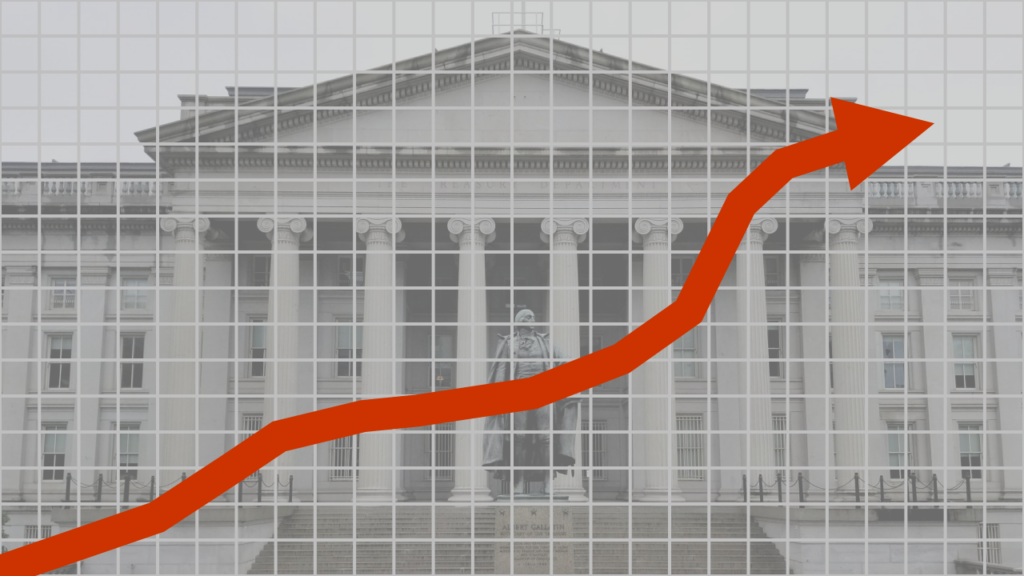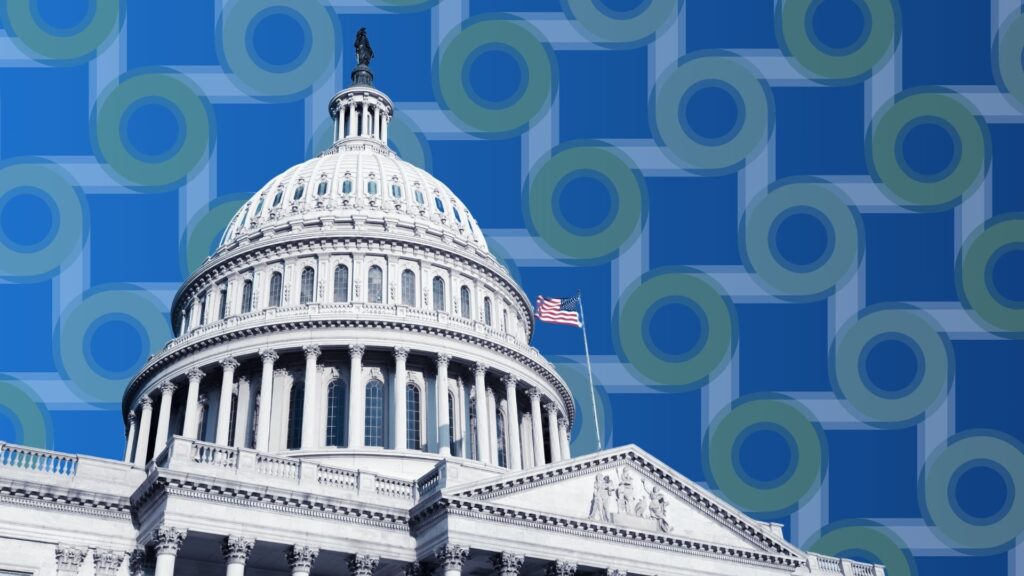Issue Brief
Understanding the Debt Ceiling
What are the debt ceiling and federal downgrades, and what do they mean for municipal bonds.

Noted: May 19, 2025
Note on Moody’s Downgrade
On May 16, 2025, Moody’s Ratings issued a ratings change to the U.S. federal government’s long-term credit rating from Aaa to Aa1. In its rationale, the agency stated “over more than a decade, U.S. federal debt has risen sharply due to continuous fiscal deficits. During that time, federal spending has increased while tax cuts have reduced government revenues. As deficits and debt have grown, and interest rates have risen, interest payments on government debt have increased markedly.” The action brings Moody’s rating for the U.S. sovereign debt in line with its two biggest competitors―S&P Global and Fitch Ratings.
Noted: August 2, 2023
Note on Fitch Downgrade
On August 1, 2023, Fitch Ratings issued a ratings change to the U.S. federal government’s long-term credit rating from AAA to AA+. The rating agency cited the U.S.’ rising debt and “repeated debt-limit standoffs and last-minute resolutions” as factors contributing to the downgrade. The move marks the second time a rating agency has downgraded the U.S.’s credit rating; S&P Global downgraded the U.S. amid a political impasse on the federal debt limit in 2011.
The U.S. Congress periodically establishes through statute a borrowing limit for the federal government known as the debt limit. Once the federal government reaches its debt limit, the U.S. Treasury Department typically implements extraordinary measures designed to extend the period which the federal government can continue its operations with minimal disruption. Congress and administrations typically reach agreements to raise the debt limit by a fixed number or suspend the debt limit until a designated date in the future. Occasionally, however, these negotiations can extend long into a period of extraordinary measures and pose potential risks to global markets.
What Happens if the Debt Limit is Left Unaddressed?
Extraordinary measures sustain federal operations for a period of time that depends on the federal government’s financial position at the time. Changes to expected federal tax receipts (e.g. a decline in market performance resulting in lower capital gains tax collections) and/or mandatory spending outlays (e.g. higher entitlement claims) can make estimating the x-date (the day on which the U.S. would exhaust its extraordinary measures) an inexact science.
The U.S. has never reached its x-date, so it is impossible to predict with certainty how the U.S. Treasury would react. Presumably, the U.S. would need to stop or severely curtail new debt incurrence. There is disagreement about the ability to “recycle” maturing debt. The federal government would also need to reign in its outlays to match or fall under its incomes (tax receipts). It could match outlays with income by either cutting mandatory and discretionary spending, or risk a default on debt service payments for outstanding Treasury bonds. While both would result in negative consequences for the economy, the latter would be both unprecedented and pose systemic risk to the functioning of global markets.
Closure of the SLGS Window
Extraordinary measures frequently, but not always, include the suspension of new sales on State and Local Government Series (“SLGS”) securities. SLGS are designed to help issuers and conduit borrowers comply with arbitrage restrictions imposed by the Internal Revenue Code and are frequently used to restrict the yield on investments or to fund an escrow in connection with a refunding or a defeasance. In the absence of access to SLGS, issuers and borrowers must use other investment options that add compliance complexities and burdens. NABL continues to discourage the U.S. Treasury use of SLGS suspension as a part of extraordinary measures.
Unknowns about a Default
As mentioned, the unprecedented nature of an x-date approach leaves many questions unanswered. While the event of a default remains unlikely, approach of the x-date may have implications to many federal programs that in some way provide financial resources to issuers and borrowers, including grant programs; intergovernmental transfer programs, debt guarantee programs; and lending facilities such as Water Infrastructure Finance and Innovation Act (WIFIA) and Transportation Infrastructure Finance and Innovation Act (TIFIA) loans. Cuts or delays to payments of federal grants and other intergovernmental transfers may impact federal contracts and anticipation notes.
A default would also likely alter valuations of Treasuries, including those used in economic modeling for issuers and borrowers. Changes to the valuation of Treasuries could adversely impact the investment portfolios of borrowers as well as defeasance agreements and assumptions for pre-refunded bonds.
Downgrade vs. Default
Rating agencies have historically offered the highest rating to U.S. government bonds until the 2010s. S&P Global notably downgraded U.S. government bonds to AA+ amid a previous debt ceiling impasse in 2011 and has yet to restore its AAA rating. On August 1, 2023, Fitch Ratings cited the U.S.’ rising debt and “repeated debt-limit standoffs and last-minute resolutions” as factors contributing the firm’s decision to downgrade the federal government’s long-term credit rating to AA+. On May 16, 2025, Moody’s Ratings lowered its rating for the U.S.’s sovereign debt from Aaa to Aa1. It is important to note that the U.S. does NOT need to default on any of its obligations in order to risk a downgrade from any of the major rating agencies.
While municipal issuers in the U.S. mostly maintain their own credit ratings, a downgrade to the U.S. sovereign debt may have ripple effects for municipal securities on a case-by-case basis. There is no way to know the exhaustive list of implications of a federal downgrade, but lessons learned from prior downgrades of U.S. government bonds indicate that, in the event of a sovereign downgrade, agencies may reassess ratings for:
- Issues that are supported by federal guarantees such as certain housing bonds;
- Pre-refunded bonds whose defeasance is reliant on Treasuries;
- Issuers with high reliance on federal programs or employment; and
- Other issues or funds backed in any way by federal support or Treasury performance.
A federal downgrade may also qualify as an “out” under a bond purchase agreement which may give the underwriter the ability to walk away from the proposed financing if the bonds have not yet closed at the time of the downgrade. A federal downgrade may also be an event triggering a notice obligation under an obligated person’s continuing disclosure obligation under SEC Rule 15c2-12 if the rating on the bonds is tied to the rating of the U.S. government. In the event of a downgrade, issuers and their counsel may want to consider what disclosure obligations, if any, are implicated by the U.S. downgrade.
Our Stance
NABL takes no stance on the existence of a federal borrowing limit but urges members of Congress and the Administration to avoid market dislocation by quickly resolving debt ceiling impasses before they pose risks to financial markets.
Latest on the Debt Ceiling

Tracking Tax Reform in 2025
Congress is focused on addressing the pending expirations of the Tax Cuts and Jobs Act (TCJA) prior to the end of this calendar year. Here’s where things stand and what…

New Year; New Debt Ceiling
What the latest debt limit approach means for municipal market and its stakeholders.

While We Were Out
We took a break from the Wrap while Congress adjourned for August recess, but this month was nonetheless a busy one. Catch up quickly on updates from while we were…